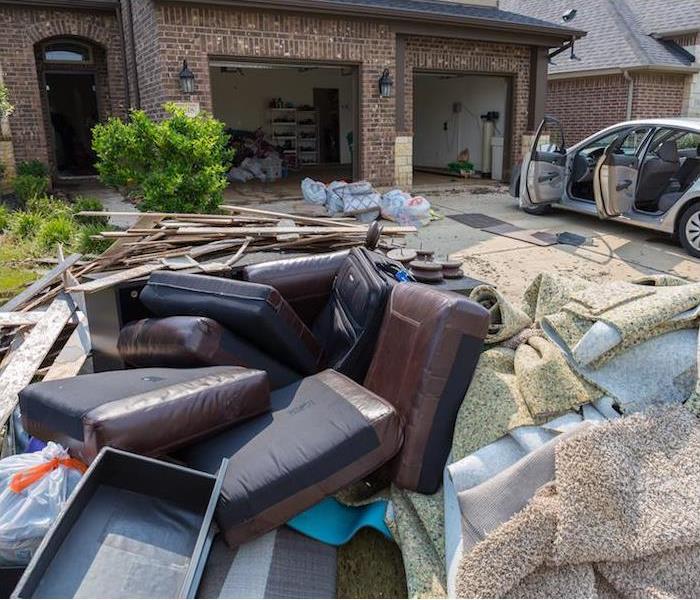Flood Damages to Homes
1/22/2020 (Permalink)
While floods were once considered a mostly isolated incident, their frequency continues to rise, making it a wise choice for homeowners to begin practicing preparedness.
Though being located in a floodplain can increase your chances of experiencing a flood, many incidents lead to flooding in many places. This also makes the damages they cause variable. However, by understanding the most common types of damage, homeowners can find themselves better prepared.
Foundational Damage. A house’s foundation is often damaged in a flood due to the soil underneath shifting and swelling after being saturated with floodwater. This can manifest itself in cracking, uneven flooring and off-kilter door and window frames.
Drywall Damage and Mold. Water-damaged drywall and mold go hand-in-hand, so a drywall replacement of any panels that have come into contact with floodwaters is typically in order.
Insulation Saturation. Most insulation can absorb water if the walls around it become soaked through, making it a prime spot for both water damage and mold growth. Some types of insulation are non-absorbent, so having a professional assess your damage is key.
Temporary Frame Swelling. A house’s structure is typically made up of solid lumber, meaning it will swell if it is soaked through. However, the good news is that once it is fully dried out, it will often return to its normal size and original structural integrity, not sustaining any lasting damage.
Appliance Ruining. Appliances are insulated to regulate their temperature, but this also makes them a culprit for water damage. Not every appliance is constructed this way, however, so getting a professional assessment can prevent you from needlessly finding replacements.
Furniture Damage. Mattresses and other upholstered items are exceptionally vulnerable to flood damage as well as mold growth, but wood and metal furniture can often be salvaged. Anything you intend to reuse should be thoroughly and professionally cleaned to prevent contamination, but once this is done, it will generally be safe.
If your home has been affected by a flood, we’ll be here to help you! Give us a call 24⁄7 to learn about our certified flood restoration process.





 24/7 Emergency Service
24/7 Emergency Service